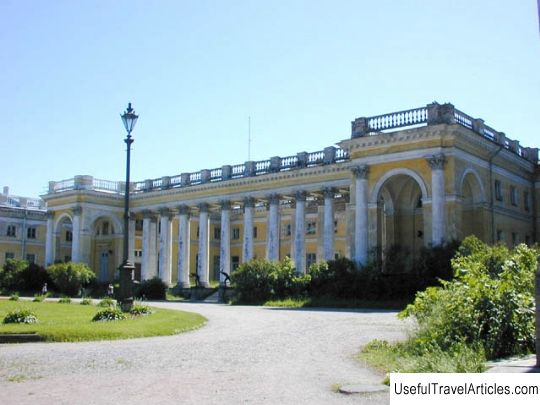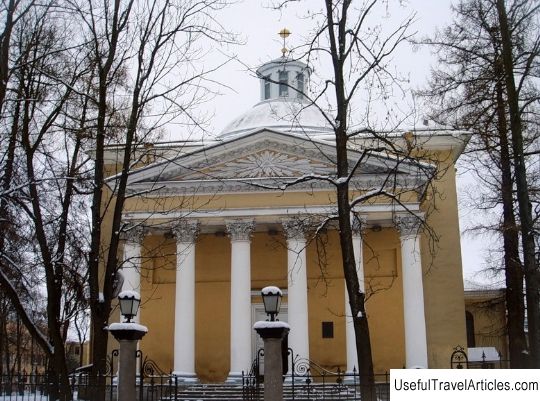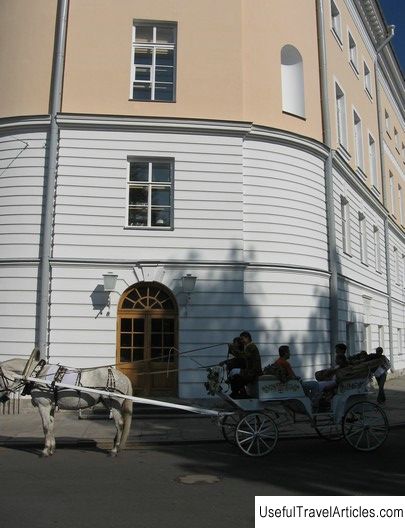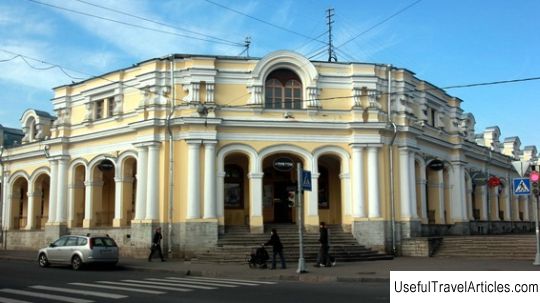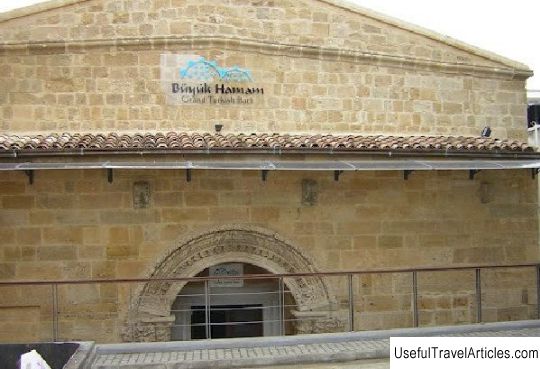War Chamber description and photo - Russia - St. Petersburg: Pushkin (Tsarskoe Selo)
Rating: 7,8/10 (1298 votes) 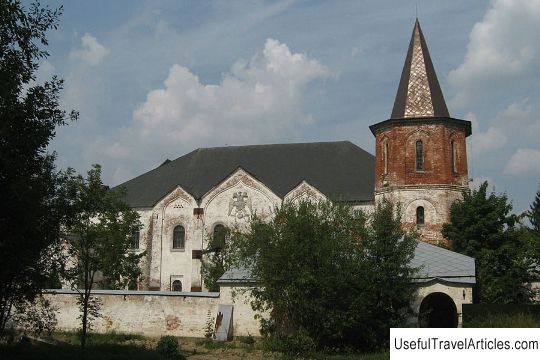
War Chamber description and photos - Russia - St. Petersburg: Pushkin (Tsarskoe Selo). Detailed information about the attraction. Description, photos and a map showing the nearest significant objects. Photo and descriptionThe War Chamber, or the Tsar's Chamber, is an architectural monument of the early 20th century. in the Farmer's Park of Tsarskoe Selo (Pushkin). The foundation stone of the Tsar's Chamber took place next to Fedorovsky town on the northern outskirts of Alexander Park on May 16, 1913 in the presence of Nicholas II. The author of the project and the builder of the War Chamber is S.Yu. Sidorchuk. The Construction Council under the leadership of Lieutenant General Volkov E.N. included: architects V.A. Kosyakov, S.A. Danini, V.N. Maksimov, E.S. Pavlov, the head of the Tsarskoye Selo palace administration, Prince Putyatin M.S., historian Vilchkovsky S.N. and head of the Chancellery Count Rostovtsev YN By the middle of 1917, the construction of the complex was completed. Funds from private donations were used for the construction, including from E.A. Tretyakova, grand-niece of the founder of the Tretyakov Gallery. The building of the Tsar's Chamber is made in the form of an irregular polygon and has a courtyard. The main architectural dominant of the complex is a two-story building with a relief image of a two-headed eagle on the facade. Adjacent to it is an octahedral tower of three tiers with a high hipped roof. The Novgorod and Pskov buildings of the 14-15th centuries were the models for the construction of the War Chamber. It is no coincidence that this style was taken as a basis: historically, this territory belonged to the Novgorod lands; elements of Novgorod architecture were used in the design of the Fedorov Cathedral; the building was supposed to be distinguished by calmness and softness of lines. The entrance to the War Chamber is through the main entrance with a porch decorated in the style of the Russian Middle Ages, and through the side, which is designed for a large flow of visitors. The main room in the building is a large auditorium with a second light and choirs in the second tier for 400 seats. Its ceilings were decorated with images of the coats of arms of all the provinces of the Russian Empire. Like the entire chamber, the hall was painted by artists N.P. Pashkov and S.I. Vashkov based on sketches by Bilibin I.Ya. At the end of the hall there was a lectern. The hall is connected to the living quarters, which are decorated like fortress towers by galleries-passages. At first, they wanted to house a museum of the history of Russian troops in the building. The collection was based on a collection of historical documents donated by E.A. Tretyakova Nicholas II at the Tsarskoye Selo exhibition in 1911. But after the outbreak of the First World War, they decided to create a war museum and the Tsar's War Chamber here, placing trophies in them, brought from the battlefields and a gallery of portraits of the Cavaliers of St. George. The curator and the first director of the museum was E.A. Tretyakov, actively collecting and assembling exhibits. In 1915, M.S. Putyatin, at the direction of Nicholas II, requested materials for the museum in the army. The artists painted about 500 portraits of the Cavaliers of St. George, 39x30 cm, based on the descriptions of colleagues and photographs. The gallery was placed in the auditorium. In 1916 the Artillery Museum donated especially valuable trophies of the First World War to the War Chamber. They were installed in the courtyard. A German plane "Albatross" was installed near the museum. The museum was supposed to hold lectures with demonstration of visual materials. For this, there was the necessary equipment, including a screen. In 1917. the People's Museum of the First World War was opened in the War Chamber. In 1919 it was abolished, and the exhibits of the museum were transferred to other museums, and some were destroyed. In 1923, the complex was transferred to the Petrograd Agronomic Institute. It housed the administration, office and club. Literary evenings were held in the club, at which V.V. Mayakovsky, V.A. Rozhdestvensky, S.A. Yesenin, F. Sologub, V. Ya Shishkov, O.D. Forsh. During the war, the building was significantly damaged, its architectural decoration was almost lost. After the end of the war, residents of Pushkin lived here. The complex was also used as a warehouse. Today the buildings of the War Chamber have been restored as a whole. Until recently, restoration workshops were located here. It is planned to place a museum in the buildings of the War Chamber, dedicated to the history of the war 1914-1918.                    We also recommend reading Museum of Viktor Tsoi ”Kamchatka” description and photo - Russia - St. Petersburg: St. Petersburg Topic: War Chamber description and photo - Russia - St. Petersburg: Pushkin (Tsarskoe Selo). |
